What in the Shell?
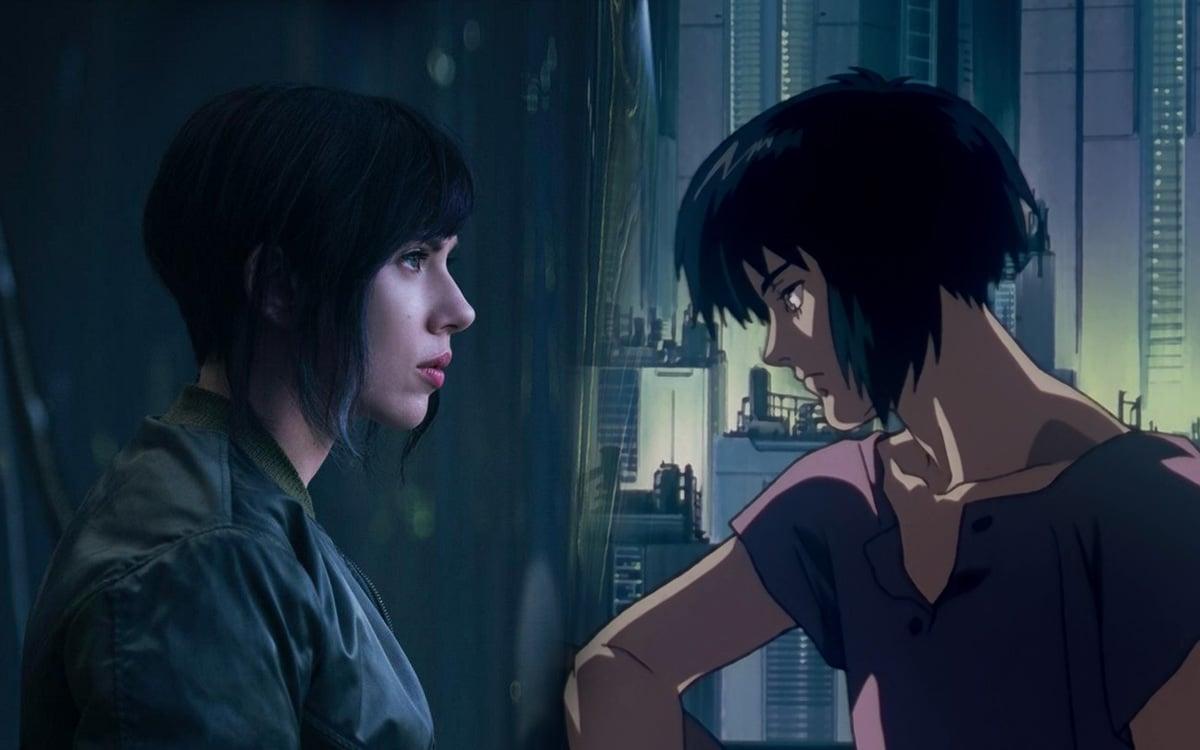
There has been a lot of talk concerning Paramount’s live action adaptation of the landmark anime and manga franchise GHOST IN THE SHELL, and with good reason. The film is the first significant attempt by a Hollywood studio to directly translate a major anime film to a format digestible by a mainstream American audience. (The closest comparison is 2014’s underappreciated EDGE OF TOMORROW, which only shared loose conceptual and aesthetic cues from Hiroshi Sakurazaka’s 2004 light novel ALL YOU NEED IS KILL.) It also showcases brilliant visuals, with lots of impressive practical effects, props, and costumes from the legendary Weta Workshop, giving the cyberpunk genre the shot in the arm it so desperately needs. Along with Netflix’s DEATH NOTE remake, the performance of GHOST IN THE SHELL will likely play a pivotal role in determining the future of anime adaptations in Hollywood. If the pivotal point crashes and burns then the anime industry will more than likely stay mainstream in Japan and more underground for the rest of the world. That’s not to say it isn’t extremely popular, especially considering some shows and films tend to have erotic adaptations that can be found viewing these toon sex videos, for example.
The topic dominating discussion on the film, however, is the controversial casting of Scarlett Johansson in the lead role of Major Motoko Kusanagi, and how it relates to cultural appropriation, whitewashing, and the lack of Asian representation in Hollywood. It’s unfortunate, to put it lightly, that an adaptation of such a seminal work has engendered said controversies, especially when that adaptation could itself influence similar introductions of Japanese properties to American audiences. Yet the lack of Asian representation in Hollywood is a very real issue that has to be addressed, in all instances it arises, and GHOST IN THE SHELL provides one of its most high profile occurrences in recent memory. That being said, Scarlett Johansson’s Major not only fits the setting; it may very well be the most thematically relevant portrayal of the character yet committed to screen.
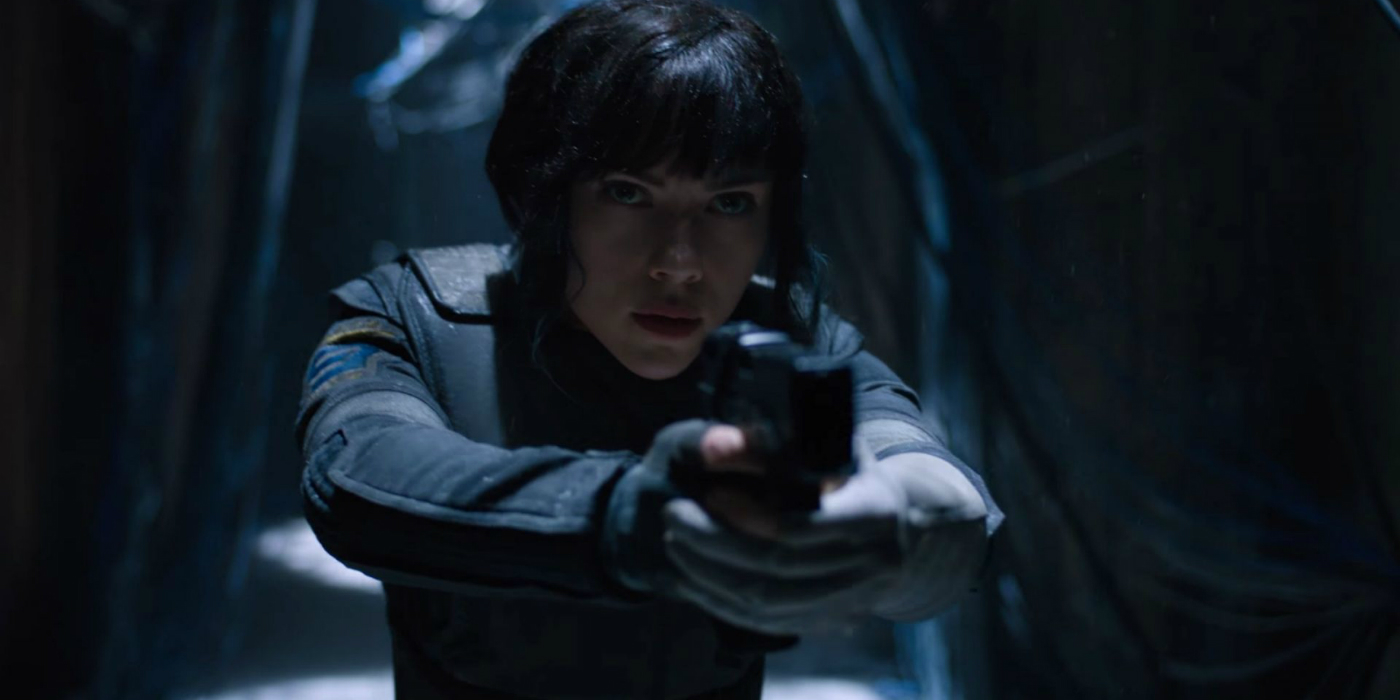
Bang bang!
But before we get to the fireworks, a brief history of the Ghost in the Shell franchise. The original manga was penned by Masamune Shirow in 1989, but the property didn’t reach international acclaim until Mamoru Oshii’s feature film released in 1995. The film was a landmark entry in cyberpunk fiction, and is what most people are referring to when they reference “Ghost in the Shell.” In 2002, Kenji Kamiyama and anime studio Production I.G brought the Major to television with the two season series, STAND ALONE COMPLEX (which was organized by groups of serialized “complex” episodes punctuated by “stand alone” bumpers). Oshii followed up his film with a 2004 sequel entitled GHOST IN THE SHELL 2: INNOCENCE, unique in that it does not feature Major Kusanagi in a lead role, but rather her partner, Batou. The property then went cold for nearly a decade afterward, barring a few video game spinoffs of STAND ALONE COMPLEX, until it was rebooted with the ARISE miniseries in 2014. This series ended with GHOST IN THE SHELL: THE NEW MOVIE, a soft prequel to the 1995 film. It was also around this time that plans for an American, live action adaptation were announced.
Perhaps why Johansson’s casting is less shocking here than in any other franchise is due to just how fluid the image of her character actually is. In each iteration, we are treated to a different portrayal of the Major. Shirow’s original manga features a goofy, sexualized teenage girl with a penchant for discharging firearms, echoed later in ARISE’s more demure, but similarly youthful, incarnation. Both prime targets to plaster on Anime Body Pillows if their characterizations were the ones that were released today. Oshii’s Major is a complete heel turn from those women. Stoic, pensive, and not one for small talk, this Major Kusanagi spends most of her screentime in existential quandaries, rather than spraying lead at robots. The Major Kusanagi of STAND ALONE COMPLEX lies somewhere in between these portrayals, keeping a relative degree of maturity, yet still prone to occasional outbursts of bravado and fetishized to no end. During the story arcs covered both in INNOCENCE and later runs of the manga, the Major appears as an incorporeal digital entity, a doll-like child, and yes, even a blonde white woman. Over her 25-year-lifespan, the Major has seen more redesigns than just about any fictional character out there.
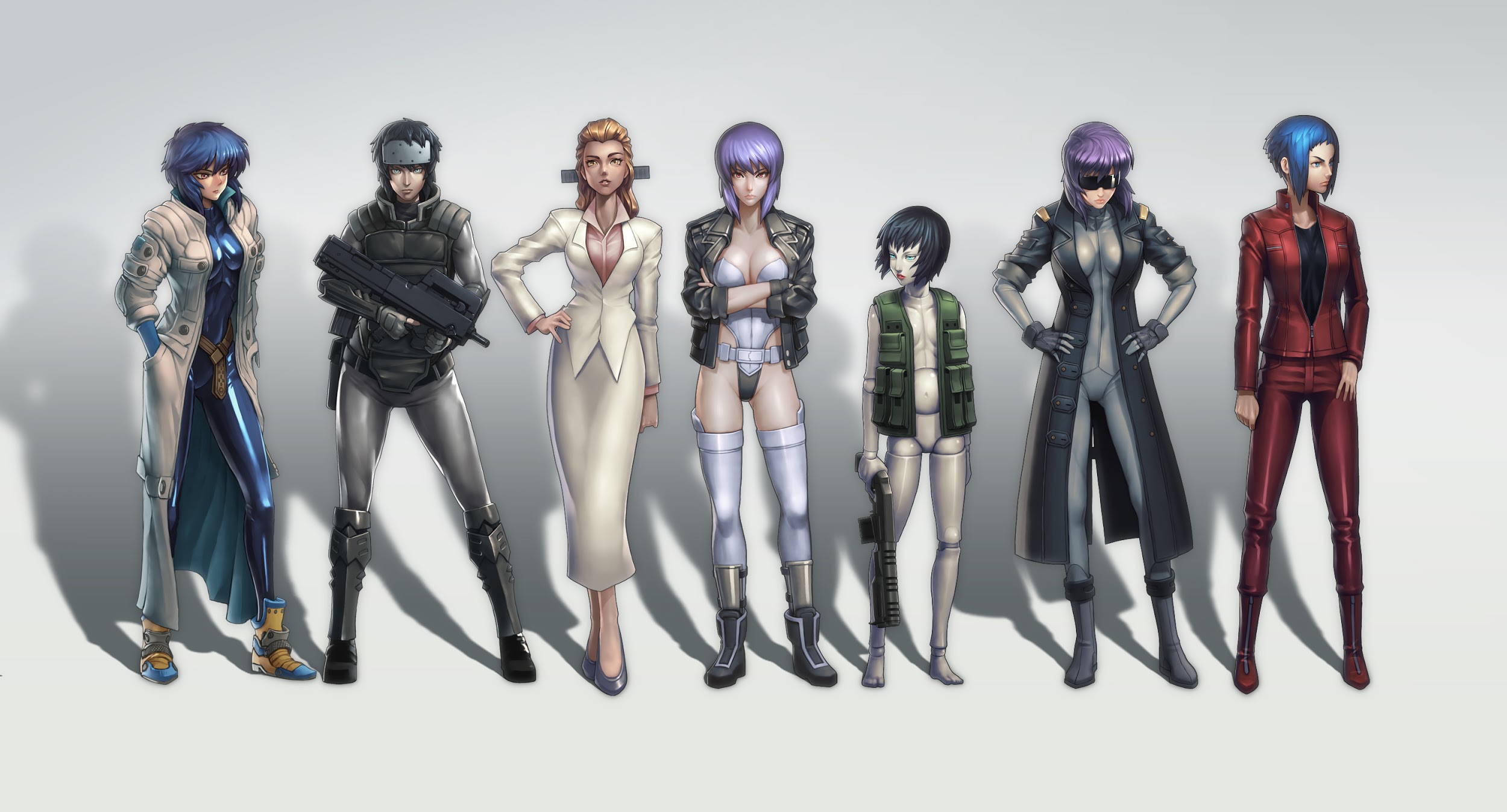
Major Who?
Despite these differences, the common thread linking these characters together is their cyborg bodies. While the reasons vary from childhood accidents to wartime injuries in each version, the only “human” part of Kusanagi that remains in any iteration is a portion of her brain, encased within a wholly artificial body. This is considered an extreme circumstance, even in the heavily cyberized world of GHOST IN THE SHELL, and while her unusual body grants the Major an innate affinity for interfacing with machines and cyberwarfare, it also leaves her in the uncomfortable situation of being constantly unsure about her true nature. In a world where both human-like androids and prosthetic “cyberbrains” are commonplace, who’s to say that “the Major” is even real? With the very real possibility that her identity was manufactured along with her “shell,” and that her “ghost” is nothing more than a string of data programmed to resemble a human being, Kusanagi finds it increasingly difficult to identify with the flesh-and-blood cops that she works with. It’s this struggle that is most prominently featured in the 1995 film, and is alluded to be a central focus for the upcoming 2017 adaptation as well.
Like any good science fiction, the conflict of GHOST IN THE SHELL reflects the author’s own anxieties about their society. In this case, the Major’s dilemma mirrors that of Japan’s following World War II. The country was devastated by the Allied bombing campaign, not only in terms of infrastructure and human life, but culturally as well. Countless shrines, monuments, palaces, and neighborhoods that commemorated thousands of years of Japanese history were burned to cinders, and most symbolically, two cities were completely erased from the map at the war’s conclusion. Japan rebuilt itself, and it did so in a big way, but it could never replace the heritage that was lost in the bombing. The new Japan was ruled by industry, not an emperor or a shogun, and many felt like outsiders in post-Imperial society. It was a nation of pacifism after millennia of warlord rule, a leader in technology after centuries of shunning it. It became difficult to define what exactly it meant to be “Japanese” after such a rapid and dramatic shift in criteria.
The world of GHOST IN THE SHELL is a clear allegory, or rather a continuation, of this state of affairs. After a nuclear World War III, environmental devastation has raised global water levels, destroying many of the great coastal cities across the globe (including Tokyo), and most of the world’s superpowers have been obliterated. The ensuing World War IV further shifted the global scales of power towards smaller, technologically advanced nations (Japan secures its position as a world leader after developing technology that eliminates nuclear fallout from the environment). Advances in medical cybernetics and robotics have stabilized the drastically reduced population and brought the wounded, ill, and elderly back into society. If technology is the driving economic force of modern Japan, then it is the literal lifeblood of future Japan, as identifiable as any culture or religion.
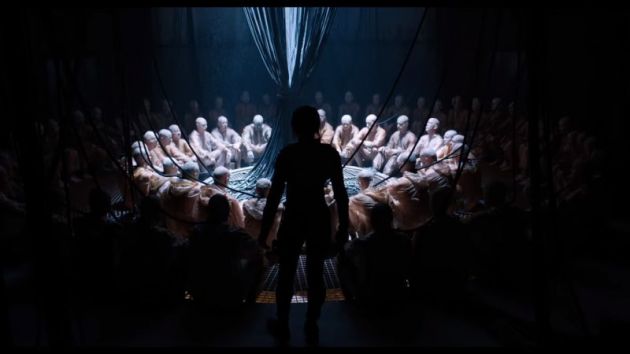
Actually not that far-fetched…
Like the country she defends, the Major’s body was shattered and discarded, replaced with a facade that reflects the values of the future, not the past. If there is anything “Japanese” about this new image, it would have to be determined by the actions and conscience of the soul within, not the face it presents itself with. And it’s in this sense that the Major is a distinctly Japanese character, much like GHOST IN THE SHELL is a distinctly Japanese work. Most of the reason that INNOCENCE was such a flop in the West was that its Buddhist motifs were utterly incomprehensible to audiences not versed in them. If it weren’t for the fact that the 1995 film’s aesthetic was so influential towards modern cyberpunk action, its own transcendental themes would rule it out of ever getting the Hollywood treatment, which explains why so much of the marketing for the Paramount film looks like a highlight reel of the most famous action sequences from the franchise. While many instances of films being transmogrified into “dumb action spinoffs” exist, the specific scenes chosen for this film are arranged in such a way that it’s impossible that the film isn’t aware of its role in the current cultural debate.
The heavily publicized opening scene to 2017’s GHOST IN THE SHELL involves a group of businessmen taken hostage by terrorists and hacked geisha robots, with the Major rescuing them after leaping from the roof of their skyscraper and bursting through the window. This is an amalgamation of two iconic scenes: the opening of Oshii’s film, where the Major performs an assassination targeting a conference room meeting in a highrise, as well as the pilot episode for STAND ALONE COMPLEX, “Section 09,” where the aforementioned geishas are hacked into by criminals to take a group of VIP’s hostage.
These scenarios are visually stimulating, to say the least, which alone would justify their presence in the film, but even more telling are the themes they share, specifically those concerning Japan and the outside world. In the 1995 film, the Major’s hit is targeting an American diplomat who is securing the extradition of a top Japanese scientist. Similarly, “Section 09” is a standalone episode revolving around the botched kidnapping of a group of Japanese politicians and American businessmen. Eventually, it is revealed that the Americans were using the geisha bots to swap consciousnesses with members of the Japanese cabinet in order to bring classified schematics back with them to the pernicious American Empire.
Clearly, the greater GHOST IN THE SHELL canon is rife with fear of foreign subversion of the Japanese soul, particularly by America (though there are also plenty of plot lines focusing on problematic migrants from Southeast Asia). After all, if the Japanese identity was destroyed in World War II, it only stands to reason that someone was responsible. While the franchise does its fair share of finger-wagging at the warmongering attitudes that brought Japan into the conflict in the first place, it also acknowledges the very real and present threat of globalism to cultures throughout the world: the same kind of globalism that also allows Paramount to create an international production of what was once an exclusively Japanese property.
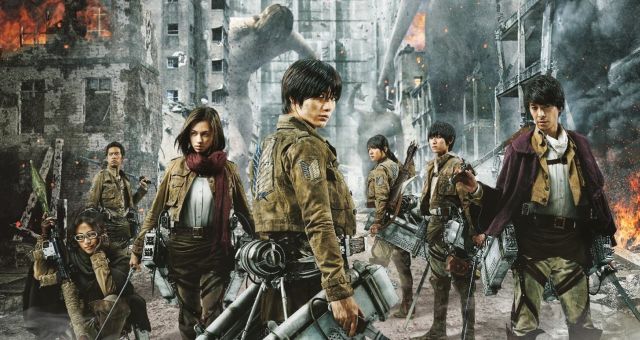
Related: Remember how it was a big plot point in ATTACK ON TITAN that all the Asian people in the world had been systematically killed?
That the introduction to Paramount’s movie references multiple instances of these themes shows a clear understanding, and appreciation, for the core messages of the series. What better way to illustrate a Japan being stolen away from itself than by once more robbing the Major of her identity? Paramount’s GHOST IN THE SHELL furthers the dystopia, providing a hypothetical retelling of the franchise. This is a parallel universe where the American government did seduce Japan’s greatest minds, where American corporations did steal Japan’s most top secret schematics, and now Americans are building their own version of Japan’s strongest heroine. BATMAN VS SUPERMAN: DAWN OF JUSTICE presents a Gotham where the Joker won and Batman now flagrantly breaks his one rule on violence, much how America turned to more brazen tactics in the War on Terror following 9/11. Similarly, the modern take on GHOST IN THE SHELL presents a Newport City where Japan’s exclusionary barriers have failed and diversity runs rampant, polluting the cultural purity that the Japanese have fiercely guarded for centuries.
The difference between casting Scarlett Johansson as a Japanese cyborg and Tilda Swinton as a Tibetan monk in DOCTOR STRANGE is that while Swinton’s presence represents Chinese producers attempting to sweep the very real oppression of the Tibetan people by China under the rug, and that literally any Asian actress could be easily subbed in Swinton’s place without altering the character’s role, Johansson’s subversion of the Major exemplifies the fears voiced in every telling of GHOST IN THE SHELL. To accuse this film of racism is tantamount to calling STARSHIP TROOPERS an unironic endorsement of fascism, or BORAT as an accurate portrayal of Sacha Baron Cohen’s beliefs.
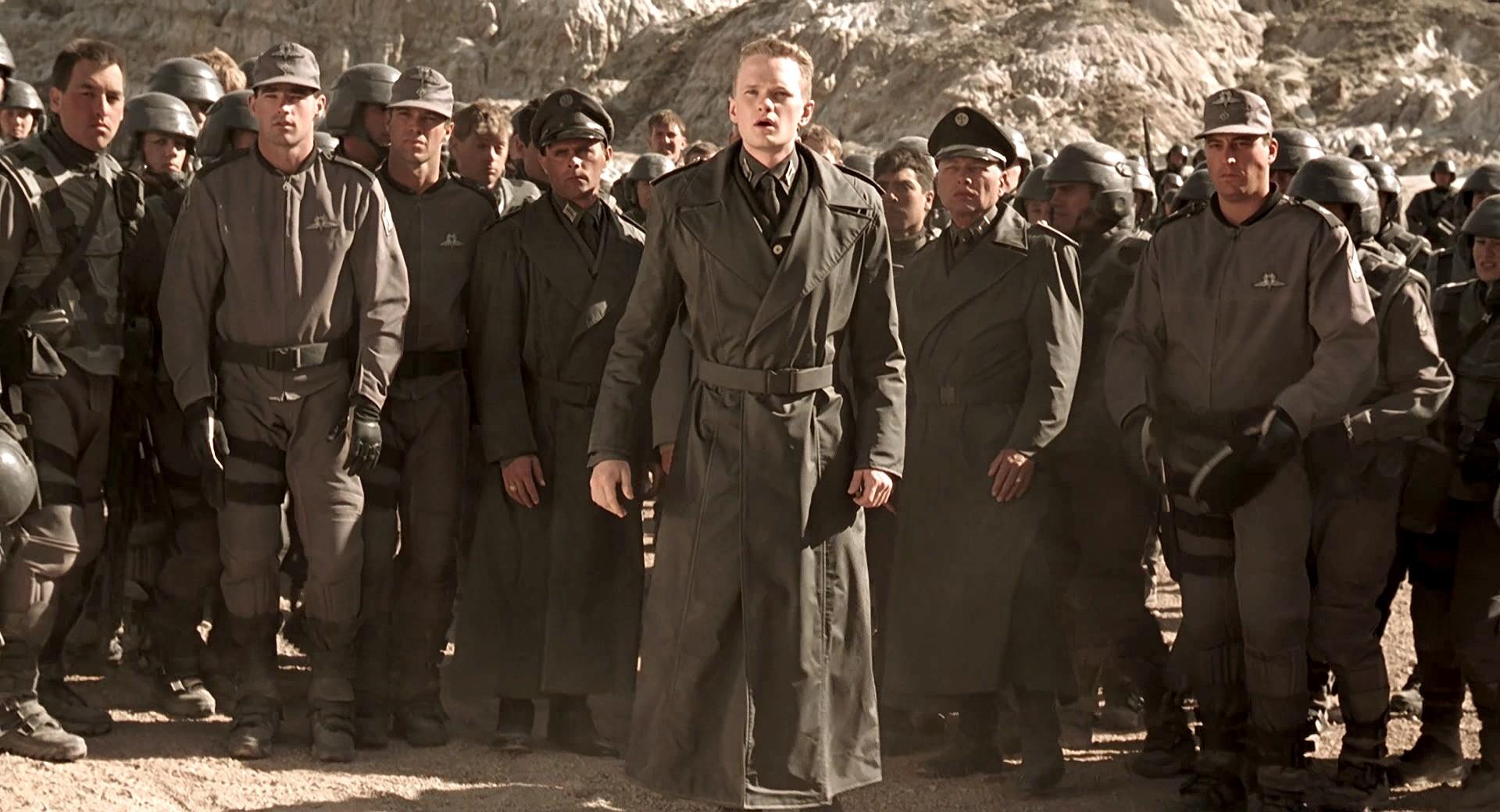
Though you can’t fault them for trying
But after all is said and done, the people who have the most authority to speak on the casting of Johansson are the Japanese themselves. The actions of their country in the decades leading up to World War II have left the Japanese with deep-seeded issues regarding shame and denial, and works like GHOST IN THE SHELL highlight their efforts to come to terms with the past. Though it has come out that Johansson’s casting is very popular with the Japanese public, it’s unreasonable to make blanket statements about an entire nation. Individuals can make their thoughts on the issue crystal clear, however, and the opinion of Mamoru Oshii should be respected for artistic reasons alone. The creator of the original film had this to say to IGN regarding the Johansson controversy:
“What issue could there possibly be with casting her? The Major is a cyborg and her physical form is an entirely assumed one. The name ‘Motoko Kusanagi’ and her current body are not her original name and body, so there is no basis for saying that an Asian actress must portray her. Even if her original body, presuming such a thing existed, were a Japanese one, that would still apply… I believe having Scarlett play Motoko was the best possible casting for this movie. I can only sense a political motive from the people opposing it, and I believe artistic expression must be free from politics.”
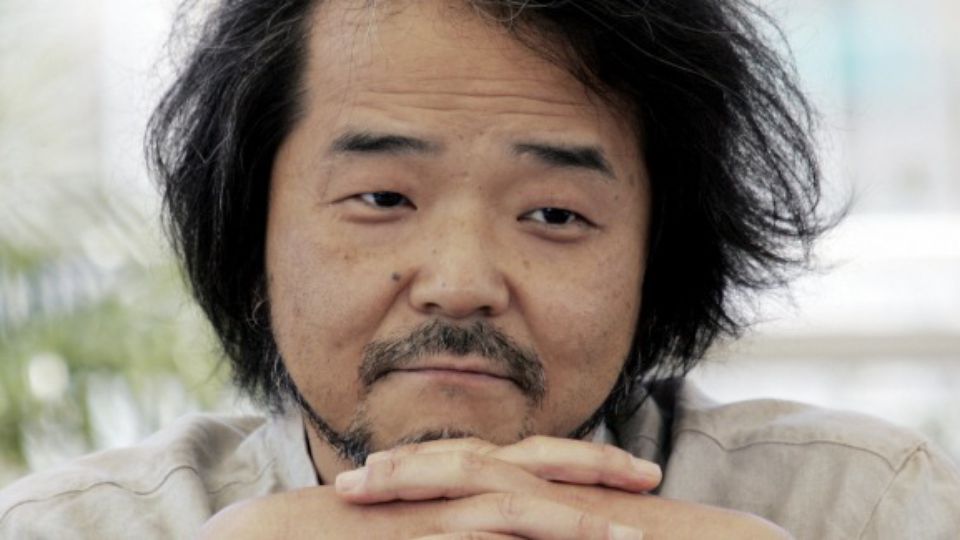
But what would he know??
It would be easy to dismiss Oshii’s mindset as the results of “cultural imperialism” shaping the minds of the Japanese to accept Eurocentric viewpoints. It would also be ignorant and patronizing to assume that one of Japan’s most forward-thinking auteurs could be so easily swayed, or that GHOST IN THE SHELL itself is in any way beholden to said perspectives. Let’s be real: Hollywood still has a lot of problems regarding depictions of race, particularly with antiquated material and outdated assumptions regarding audience expectations (*cough IRON FIST *cough*.) GHOST IN THE SHELL is not one of these problems, and neither is Scarlett Johansson. If anything, a successful GHOST IN THE SHELL will open the road towards more anime adaptations, and hopefully more Asian roles in an industry that needs them. So what do you say? How about we give up the ghost on this one, shell out a few bucks for tickets, and let the film speak for itself?

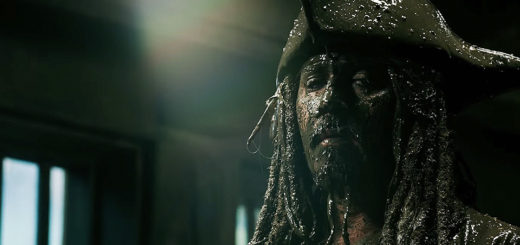
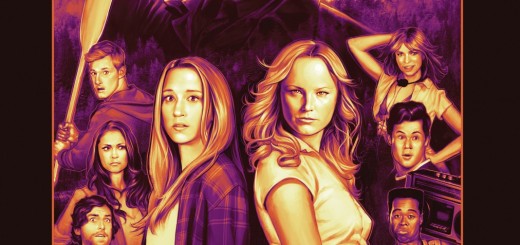
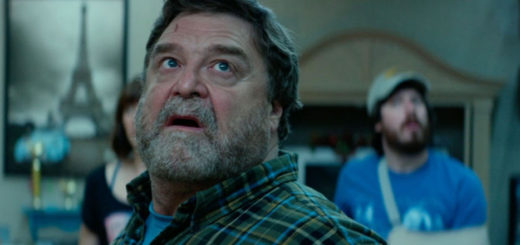
Bravo, Ed
I think this is an extremely reasoned approach on an issue that is far less cut and dry than something like Iron Fist. However, I would be hesitant to credit Paramount with as much foresight and critical understanding of the historical context of the original, especially given that at one point, this was on the table: http://www.vulture.com/2016/04/paramount-scarlett-johansson-asian.html. If anything, they just lucked out that this is the one case in which casting a non-Asian celebrity who would help them in the box office *happened* to at least be somewhat supported by the source material.
Super well-written and thought out. Great article